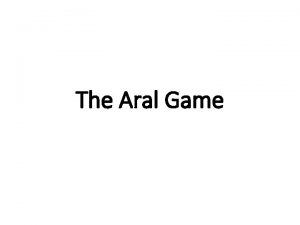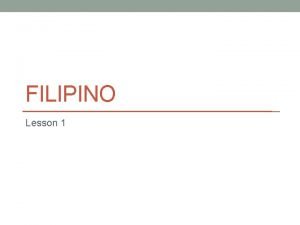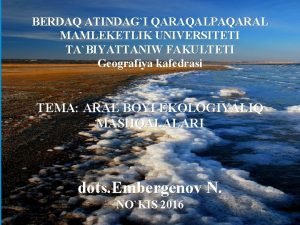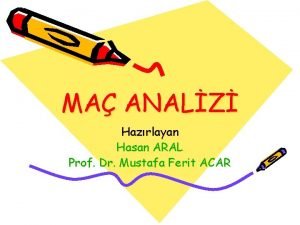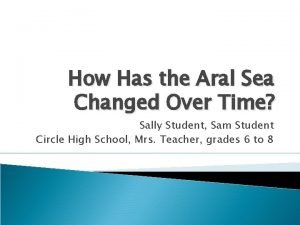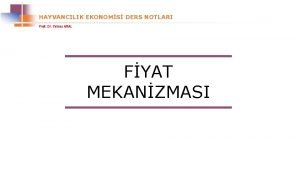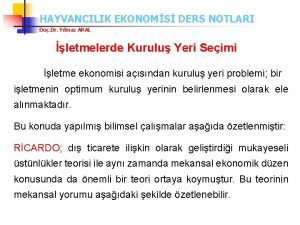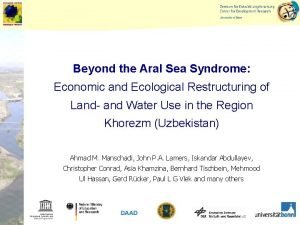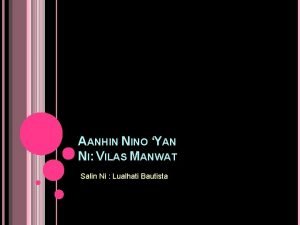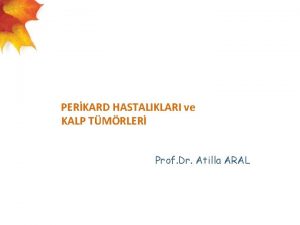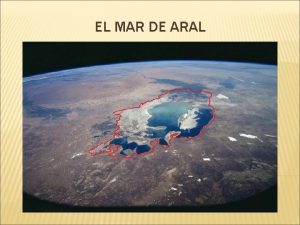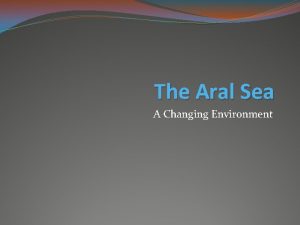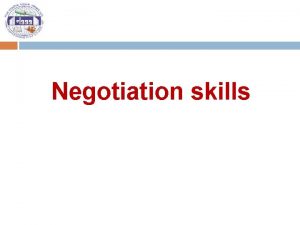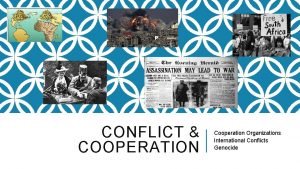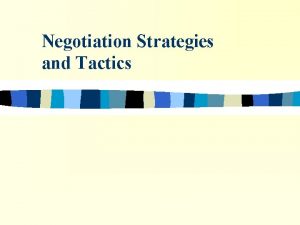The Aral Game Assignment on Negotiation and Cooperation















- Slides: 15

The Aral Game

Assignment on Negotiation and Cooperation • in-class negotiation sessions between the Aral Sea upper and lower basin players • asymmetry of information and power, and the importance of flexibility in infrastructure adjustment to changing water-supply conditions • hydro-economic optimization model that feeds into a cooperative game theory allocation solution and stability assessment • Explore states of nature (climate change), possible investments in water infrastructure, and several institutional arrangements in the basin

Aral Sea Basin

Principles of the Aral Game • based on a subset of the rivers and riparian states in the Aral Sea Basin (i. e. , the Syr Darya basin and two or three of its four riparian countries • Kyrgyzstan (Kg), Uzbekistan (Uz), and Kazakhstan (Kz) • game assesses possible arrangements of water releases from the Kyrgyz-owned Toktogul reservoir and their impact on the welfare of the players

Syr Darya Basin

Aral Game Assignments

In-Class Assignment – Negotiation in the Aral Sea Basin • based on the amount of water inflow and storage in Toktogul Reservoir, reported for the period 1911 – 2012 • upstream and downstream players differ in their desired use of the water • three in-class scenarios • variable to be decided by negotiation is the price that the downstream player will pay the upstream player for releasing water in the summer for irrigation use

In-class negotiations • very short time schedule (15 minutes each) • Scenario A - simulates a situation where the players have very little information about the flow • Scenario B - simulates a situation where only one party has full information about the flow • Scenario C - simulates a situation where both players have full information about the flow • Objectives - demonstrate the value of information and information asymmetry

Negotiating Teams • divide into negotiating teams • 2 w 7 members • 1 w 5 members • teams try to enter into an agreement that yields a positive payoff for each team • teams select a chief negotiator and split the remaining members into the upstream and downstream parties • chief negotiator - leads the decision process between the negotiating parties

Background • year is 1992 • Kyrgyz (upstream) and Uzbek (downstream) nations share the Basin • Kyrgyz use water for hydropower • net value of each m 3 stored and run through the turbines at Toktogul reservoir is 0. 074 $US/m 3. • Uzbeks use water for irrigation • net value of each m 3 of water applied on the fields is 0. 0754 $US/m 3.

Assignment • You are to conduct a negotiation and report the results to your government. • You need to negotiate a mechanism to allocate the annual flow between the Kyrgyz and Uzbek nations in order to maximize the payoff in the decade period 2003 -2012. • You have 15 minutes for each negotiation scenario. • What is the annual net payoff you can offer your government? • Water not included in a treaty is lost.

Scenario A • The following information is available to both parties: • The long-term mean annual flow at Toktogul is 11, 799 million m 3/yr • Once allocated to a player, each unit (m 3) of water can be used by that player without affecting the other one. • Water that is not allocated cannot be captured and used by any other player.

Scenario B • The following information is available to only the Kyrgyz delegation: • The recorded flow information in the following slide is available. • The following information is available to both delegations: • The long-term mean annual flow at Toktogul is 11, 799 million m 3/yr • Once allocated to a player, each unit (m 3) of water can be used by that player without affecting the other one. • Water that is not allocated cannot be captured and used by any other player.

Toktogul Inflows

Scenario C • The following information is available to both Kyrgyz and Uzbek delegations. • The recorded flow information in the following slide is available. • The long-term mean annual flow at Toktogul is 11, 799 million m 3/yr • Once allocated to a player, each unit (m 3) of water can be used by that player without affecting the other one. • Water that is not allocated cannot be captured and used by any other player.
 Aral game
Aral game Gas station game negotiation
Gas station game negotiation Agriculture cooperation and farmers welfare
Agriculture cooperation and farmers welfare Programa sa edukasyon
Programa sa edukasyon Salitang kilos
Salitang kilos Ekologiyaliq mashqalalar
Ekologiyaliq mashqalalar Banaag sa pangungusap
Banaag sa pangungusap Os dois principais rios que alimentavam o mar de aral
Os dois principais rios que alimentavam o mar de aral Hasan aral
Hasan aral Aral sea changed over time
Aral sea changed over time Prof. dr. yılmaz aral
Prof. dr. yılmaz aral Işletme ekonomisi ders notları pdf
Işletme ekonomisi ders notları pdf Aral sea syndrome
Aral sea syndrome Associazione regionale allevatori lombardia
Associazione regionale allevatori lombardia What will one do with that by vilas manwat summary
What will one do with that by vilas manwat summary Perkard
Perkard
